Weed Management: Weed Biology
Knowledge of weed growth habit is important for developing an effective weed management program.
Broadleaves
Broadleaves, or dicotyledonous plants, have two cotyledons (seed leaves) when the weed seed germinates. Their true leaves have net-like veins and usually showy flowers. Examples include clovers, lespedeza, plantain, henbit, chickweed, Florida pusley, beggarweed, matchweed, and many others.
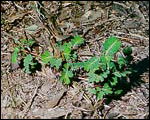 |
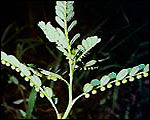 |
| Chamberbitter is an example of a broadleaf weed. | |
Grasses
Grasses are monocotyledonous plants that have only one cotyledon, or seed leaf, present when seedlings emerge from the soil. Grasses have hollow, rounded stems with nodes (joints), and parallel veins in their true leaves. Examples include crabgrass, goosegrass, crowfootgrass, dallisgrass, bullgrass, annual bluegrass, alexandergrass, cogongrass, torpedograss, and smutgrass.
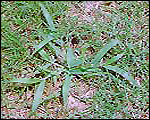 Crabgrass is a hard to control grassy weed. |
Sedges & Rushes
Sedges have stems that are triangular-shaped and solid, while rush stems are round and solid. Both sedges and rushes favor a moist habitat. Economically important members include yellow and purple nutsedge and, to some degree, globe, Texas, annual, and water sedge, plus path and beak rush and perennial kyllinga.
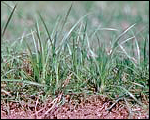 |
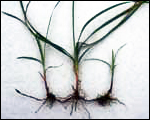 |
| Purple nutsedge (above) and yellow nutsedge (below) are difficult to control in the yard. | |
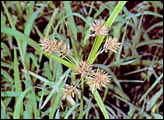 |
|
Life Cycles
Weeds complete their life cycles in either one growing season (annuals), two growing seasons (biennials), or three or more years (perennials). Annuals that complete their life cycles from spring to fall are generally referred to as summer annuals, and those that complete their life cycles from fall to spring are winter annuals.
